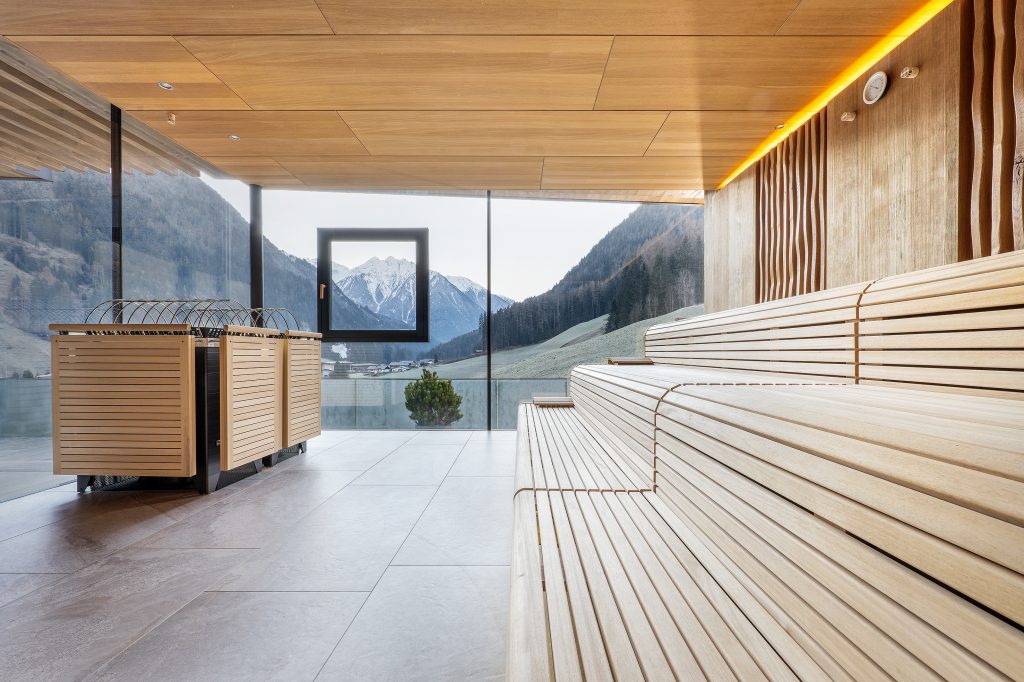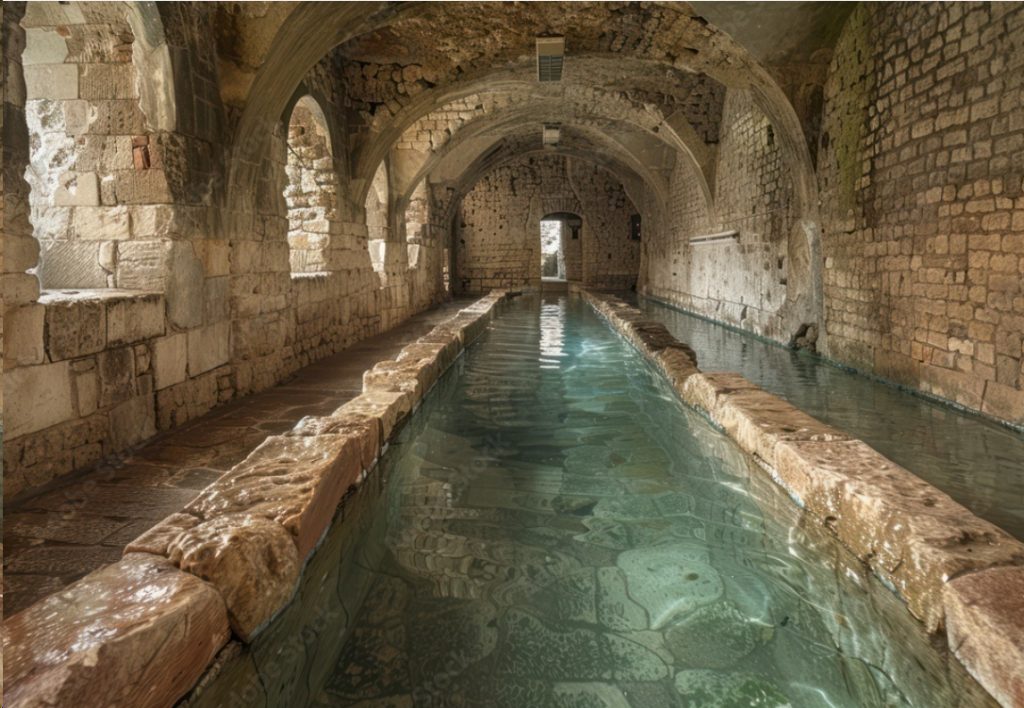
The concept of using saunas or steam rooms for heat therapy has a rich social and cultural history spanning thousands of years. As far back as the stone and bronze ages through ancient civilisations, diverse cultures around the world have used heated spaces for spiritual ceremonies, healing, cleansing, socialising, and relaxation.
Heat therapy, or thermotherapy, encompasses treatment with dry or conducted heat (saunas) and moist or convection heat (steam rooms). Exposure to either improves blood flow and circulation to sooth pain, heal damage to the body, and improve recovery after exercise.
Intense short-term heat exposure in saunas leads to significant changes in skin and core body temperature, activating various thermoregulatory pathways, which may contribute to improved cardiovascular function and other health benefits.
The hammam, or steam room, was a pivotal social institution in the Middle East for centuries. Traditionally used to promote hygiene and public health, it also served as a meeting place for socialising and relaxation. Meanwhile, the Mexican temazcal, or sweat house, was originally used to cleanse native warriors before going to war but has since gained notoriety for its rumoured healing powers.
Equally revered in Asia (consider the South Korean jjimjiilbang or the Japanese mushi-buro and kama-buro) and Russia, the sauna has truly stood the test of time and is increasingly used for health and wellbeing.
This guide covers the basics of saunas and heat therapy, the types, benefits, and how to maximise your experience.
Origin of the European sauna
Sauna culture in Finland dates back to 7000BC. At this time, the smoke sauna, or savusauna, was central to Finnish life and used for hygiene, religious ceremonies, childbirth and social gatherings, but also for health reasons and it remains an integral part of life for most Finnish citizens today. Saunas were typically small, simple structures dug into the earth and often had a stone hearth to generate high temperatures and low humidity.
Traditional Finnish saunas were characterised by a fire that was lit under a pile of stones. Once these were hot, the fire was extinguished and the smoke vented before people entered.
The concept of sauna-like bathhouses gradually spread across Europe after World War II in Scandinavian and German speaking regions, as well as Russia and the Baltic region. Consequently, the Russian banya and the Estonian sauna have similar features to the Finnish sauna, such as a wooden frame and stone hearth.
Saunas are a high priority as part of health and wellness practices in Germany and sometimes prescribed as a medical cure. Citizens have an open-minded approach and nudity is common, with sauna rooms often considered textile-free zones where speaking is also frowned upon. The Aufguss visual and sensual ritual originated in Germany, incorporating essential oils, music, and lighting to enhance the sauna experience.
Distinct types of sauna
Saunas have become a global phenomenon in homes, gyms, wellness and spa centres, and sports facilities but there are different types, with subtle differences.
The traditional Finnish sauna is typically 70 to 100C warm, with an average humidity of 10-20%, and heated with stones that produce and steam when water is poured over them (löyly). Likewise, the standard dry sauna is heated to a similar temperature using an electric or wood-burner but with low 40 to 60% humidity, which generates intense dry heat.
Electrically heated saunas achieve high temperatures with low humidity, utilising an electrical heater installed on the floor to warm the sauna room. Wood burning saunas, on the other hand, use wood to warm the sauna room and stones, typically featuring low humidity and high temperatures. With the Russian banya experience, bathers alternate between hot steam and cold plunges and are sometimes gently whipped with birch branches (venik).
In recent years, infrared saunas have also emerged. These differ from traditional saunas and emit radiant heat directly onto the body. The mild heat (45 to 60C) is effective for deep tissue penetration.
Health benefits of heat therapy – saunas
The health benefits of heat therapy, including improved circulation, detoxification, and relaxation, are widely promoted. A sauna quickly increases the heart rate and widens the blood vessels, which leads to broad health benefits:
- Detoxification: Sweating helps remove toxins from the body.
- Improved Circulation: Heat causes blood vessels to dilate, improving blood flow.
- Muscle Relaxation: Reduces muscle tension and pain, promoting relaxation, and feelings of wellbeing.
- Stress Relief: The soothing environment and heat help reduce stress.
- Skin Health: Opens pores and improves skin tone. Entering a sauna elevates the skin temperature, inducing sweating and playing a crucial role in the body’s thermoregulation processes.
- Enhanced Cardiovascular Health: Regular sauna use may lower blood pressure and improve heart health, potentially reducing the risk of cardiovascular diseases. Several studies have linked sauna bathing to reduced blood pressure and decreased risks of high blood pressure.
- Boosted Immune System: Increased body temperature may help fight infections.
- Weight Loss: Temporary weight loss through sweating; infrared saunas may also boost metabolism.
- Pain Relief: Improves joint movement and helps with chronic pain conditions, including arthritis.
Explore other forms of heat therapy
The soothing atmosphere of a sauna is perfect for total relaxation and tranquillity, but other forms can be equally effective, especially for treating localised pain.
- Hot stone therapy and massage: This involves placing heated stones on the body to relieve muscle tension and soft tissue pain. Smooth, flat, heated stones are placed on the affected region of the body to increase blood flow, for example along the spine, on the stomach, chest, face, palms or feet and toes. The therapeutic effects can be enhanced with massage with the hot stones, using long strokes, circular movement, vibration, tapping and kneading. Hot stone massage can help to reduce stress and anxiety, improve immunity, promote sleep, and reduce cancer symptoms.
- Hot baths and hot springs: Be it a hot tub or warm bath, soaking in hot water can relax muscles, improve circulation, and relieve stress. They provide an opportunity to relax, rejuvenate, and detoxify for overall wellbeing. Hot springs are also rich in minerals, such as boron, calcium, potassium, iron, and magnesium for added health benefits.
Maximise your sauna experience with regular dry sauna bathing
There are several ways to maximise the unique sauna experience. For example, taking a warm shower before entering the sauna will open skin pores to help facilitate detoxification, practice deep breathing or meditation in the sauna for added relaxation, and use essential oils, like eucalyptus or lavender, for an intense, aromatic experience.
Much like with the Russian banya, why not alternate hot and cold sensations, with a cold shower or plunge between sauna sessions to stimulate circulation and enhance the benefits. Finally, rest in a quiet space to allow your body to adjust, hydrate, and enjoy the post-sauna relaxation.


























